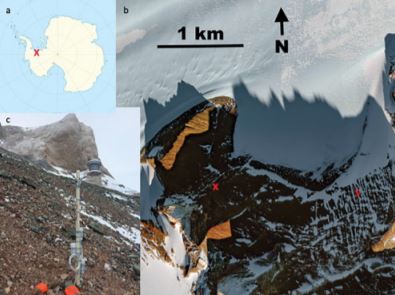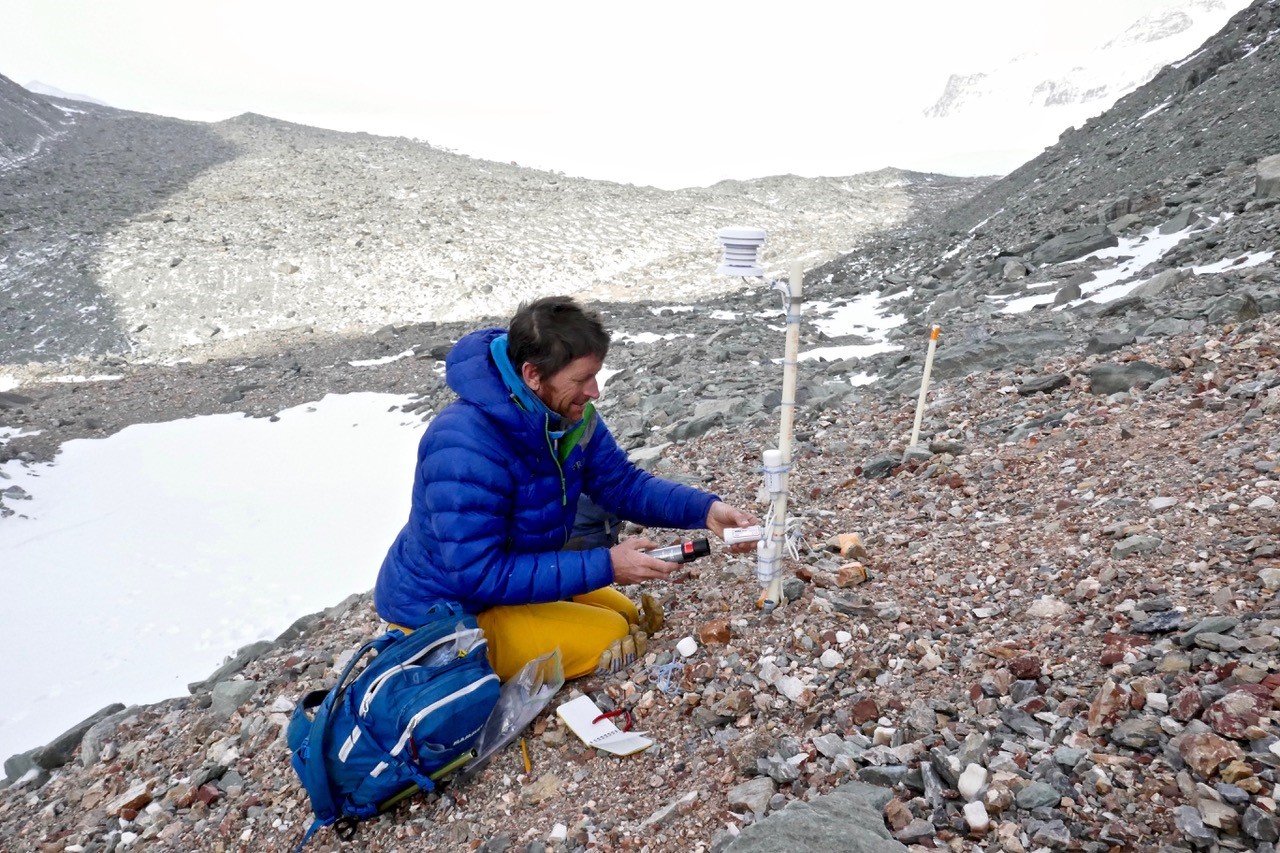
A recent collaboration brought together the NASA Ames Research Center and Christopher P McKay, Edward Balaban, Simon Abrahams and ALE partner Nick Lewis that produced a paper on Antarctica’s permafrost. Dry permafrost is ground that never warms above 0°C and has negligible ice content. Dry permafrost overlying ice-cemented ground is rare on Earth, but is widespread on Mars. In the polar regions of Mars, the dry permafrost layer begins at the surface and ice-cemented ground is found below it . On Earth, dry permafrost over ice-cemented ground has been reported in the arid upland regions of the Antarctic Dry Valleys, as well as at Elephant’s Head, in Ellsworth Land, Antarctica near one of ALE’s deep interior experiences.
Motivated by the connection to Mars, as well as by the questions of the stability and age of the ground ice, there have been extensive studies of dry permafrost over ice cemented ground. According to the paper, they report on a new site (79°49.213’S, 83°18.860’W, 718 m elevation) located on the side of Mount Dolence in Ellsworth Land, Antarctica. Year-round temperature and humidity measurements indicate that dry permafrost is present between depths of 13.5 and 49.0 cm – the location of ice-cemented ground. The mean annual frost point of the ice-cemented ground is -17.0 ± 0.2°C and the mean annual frost point of the atmosphere is -22.7 ± 1°C. The corresponding mean annual temperatures are -19.2°C and -20.3°C. Neither the temperature of the ice-cemented ground nor the air rise above freezing. Both the dry permafrost and the ice table may be habitable. In the dry soil at 3 cm depth there are 80 hours in the summer when temperature exceeds -5°C and water activity exceeds 0.8. At the ice table, temperature exceeds -10°C and water activity exceeds 0.8 for 35 hours in the year. The ice table and the dry permafrost above it would be considered a ‘Special Region’ on Mars. Further microbial investigation of this site is indicated.

*Simon Abrahams collecting data for NASA at Elephant Head monitoring station, Ellsworth Mountains, Antarctica. December, 2018.
Read the full paper, methods, results, discussions and conclusion on Cambridge University Press. Find out more on ALE partner Nick Lewis and his extensive climbing and operations background in the Ellsworth Mountains here.
Paper published on Cambridge University Press: https://www.cambridge.org/core/journals/antarctic-science/article/dry-permafrost-over-icecemented-ground-at-elephant-head-ellsworth-land-antarctica/8E6B99B4A636CD2A9933611D8D7F9910
Date Station Image & Map Above: 1. a. Map, b. satellite image, and c. photograph of data station at the dry permafrost site overlying ice-cemented
ground near Elephant Head, 79°49.213’S, 083°18.860’W, 718 m elevation. The site monitored for the year is marked on the map and the photograph with a red X. The site studied in Schaefer et al. (2017), c. 1.5 km to the east, is marked with an S.
Featured Image Copyright: ALE